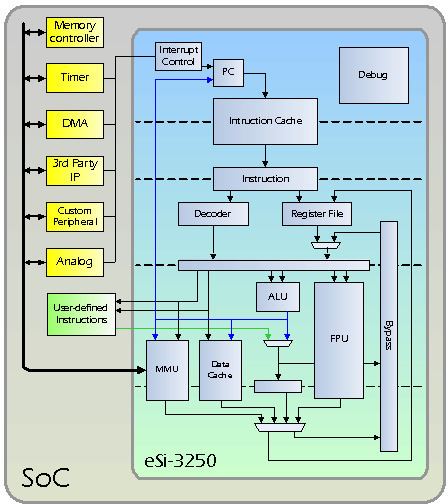Designer Ensilica Introduced 2009 Type Register-Register | Bits 16-bit/32-bit Design RISC | |
 | ||
Encoding Intermixed 16 and 32-bit | ||
eSi-RISC is a configurable CPU architecture from Ensilica. It is available in five implementations: the eSi-1600, eSi-1650, eSi-3200, eSi-3250 and eSi-3260. The eSi-1600 and eSi-1650 feature a 16-bit data-path, while the eSi-32x0s feature 32-bit data-paths. Each of these processors is licensed as soft IP cores, suitable for integrating into both ASICs and FPGAs.
Contents
Architecture
The main features of the eSi-RISC architecture are:
While there are many different 16 or 32-bit Soft microprocessor IP cores available, eSi-RISC is the only architecture licensed as an IP core that has both 16 and 32-bit implementations.
Unlike in other RISC architectures supporting both 16 and 32-bit instructions, such as ARM/Thumb or MIPS/MIPS-16, 16 and 32-bit instructions in the eSi-RISC architecture can be freely intermixed, rather than having different modes where either all 16-bit instructions or all 32-bit instructions are executed. This improves code density without compromising performance. The 16-bit instructions support two register operands in the lower 16 registers, whereas the 32-bit instructions support three register operands and access to all 32 registers.
eSi-RISC includes support for Multiprocessing. Implementations have included up to seven eSi-3250's on a single chip.
Toolchain
The eSi-RISC toolchain is based on combination of a port of the GNU toolchain and the Eclipse IDE. This includes:
The C library is Newlib and the C++ library is Libstdc++. Ported RTOSes include MicroC/OS-II, FreeRTOS, ERIKA Enterprise and Phoenix-RTOS
